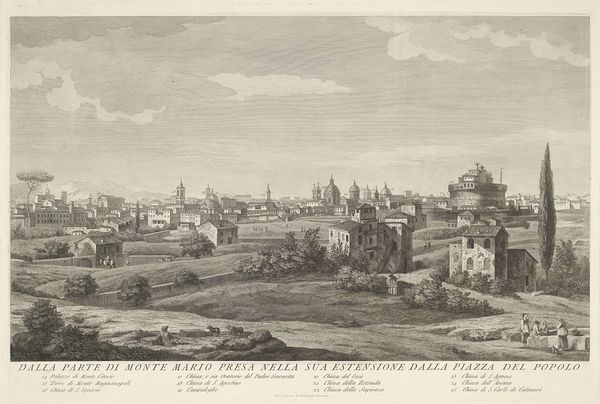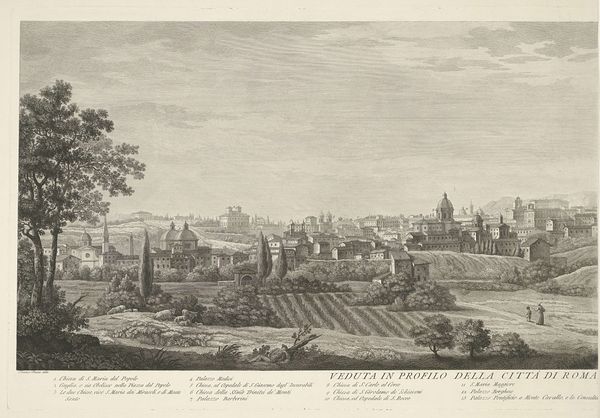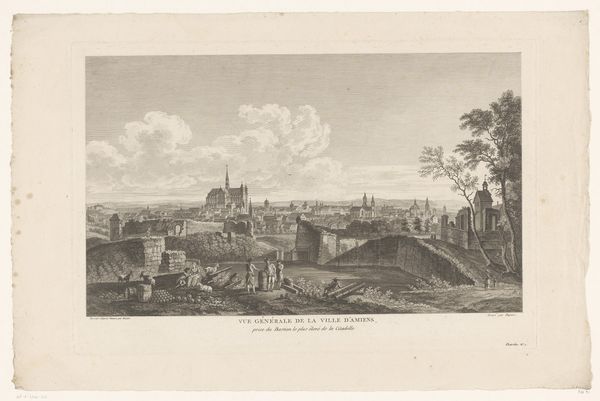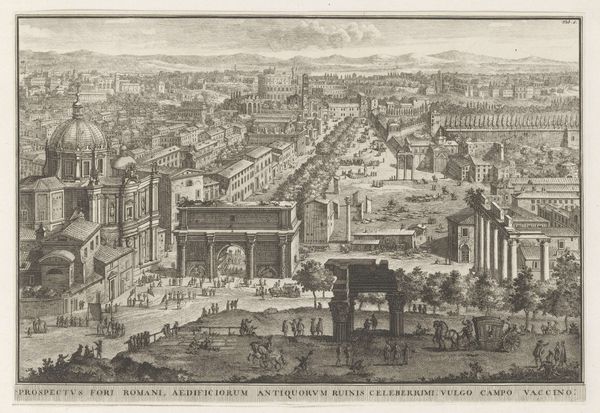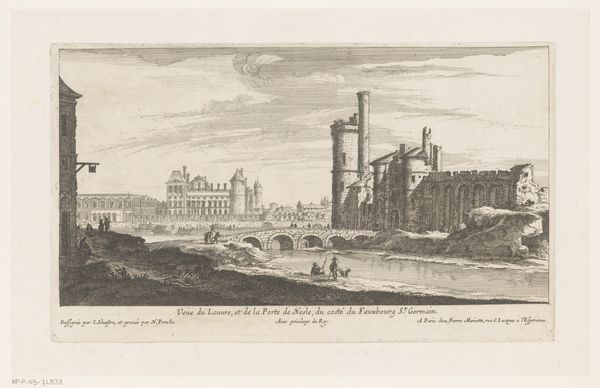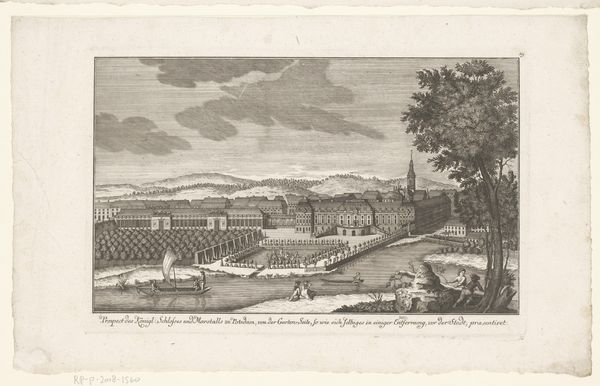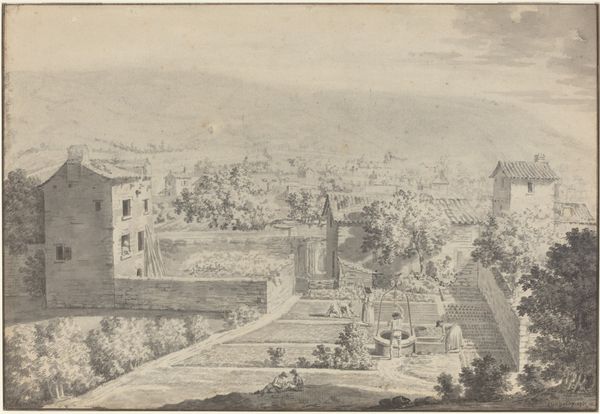
print, etching, engraving
#
neoclacissism
# print
#
etching
#
old engraving style
#
landscape
#
cityscape
#
history-painting
#
italian-renaissance
#
engraving
Dimensions: height 472 mm, width 700 mm
Copyright: Rijks Museum: Open Domain
Curator: Here we have “Panorama van de stad Rome (rechter deel),” or “Panorama of the city of Rome (right part),” dating roughly from 1743 to 1803, by Giovanni Volpato. It’s an etching and engraving printed on paper. Editor: It's remarkably detailed! My first thought is about the labor involved in creating something this intricate by hand. I mean, look at all those tiny lines that define the buildings and the rolling hills. It seems like it'd take forever to incise. Curator: Absolutely. The print meticulously depicts Rome, drawing upon the symbolic weight of its most significant monuments. St. Peter's Basilica looms large, naturally dominating the composition, acting as a symbolic cornerstone to which the rest of the image pays homage. Editor: It’s interesting that Volpato chose to focus on the physical layout of the city, including everyday things like those grazing cattle in the foreground. How does this interplay of the quotidian and monumental contribute to the city's perception at the time? Was this for Romans or tourists, maybe? Curator: It likely served both purposes, framing Rome not merely as a collection of ancient ruins and religious symbols, but as a living, breathing city—an active cultural center for Europeans at the time to connect to the history they learned via books. Editor: Which means access to prints was access to power for both makers and consumers of images. Seeing how it's produced on paper makes me think about its distribution. The engraving would let Volpato make copies that others would pay to own and share. What social circles was this particular scene consumed within, I wonder? Curator: Probably by members of the Grand Tour circuit, solidifying Rome’s place as a pilgrimage site for those wanting to reconnect with classical ideals of art and architecture and learn more about where their own sense of order was founded. The architectural landmarks aren’t just buildings. They stand for ideals like stability and beauty, which many cultures across Europe were keen to explore. Editor: I like how you link the physical structure to underlying ideals. It highlights how an artwork’s value changes over time, shifting between devotional objects, political tokens, and then commodities traded within these European networks you mention. So much to consider! Curator: Precisely, and thank you for considering the rich interplay between the tangible and the symbolic!
Comments
No comments
Be the first to comment and join the conversation on the ultimate creative platform.
